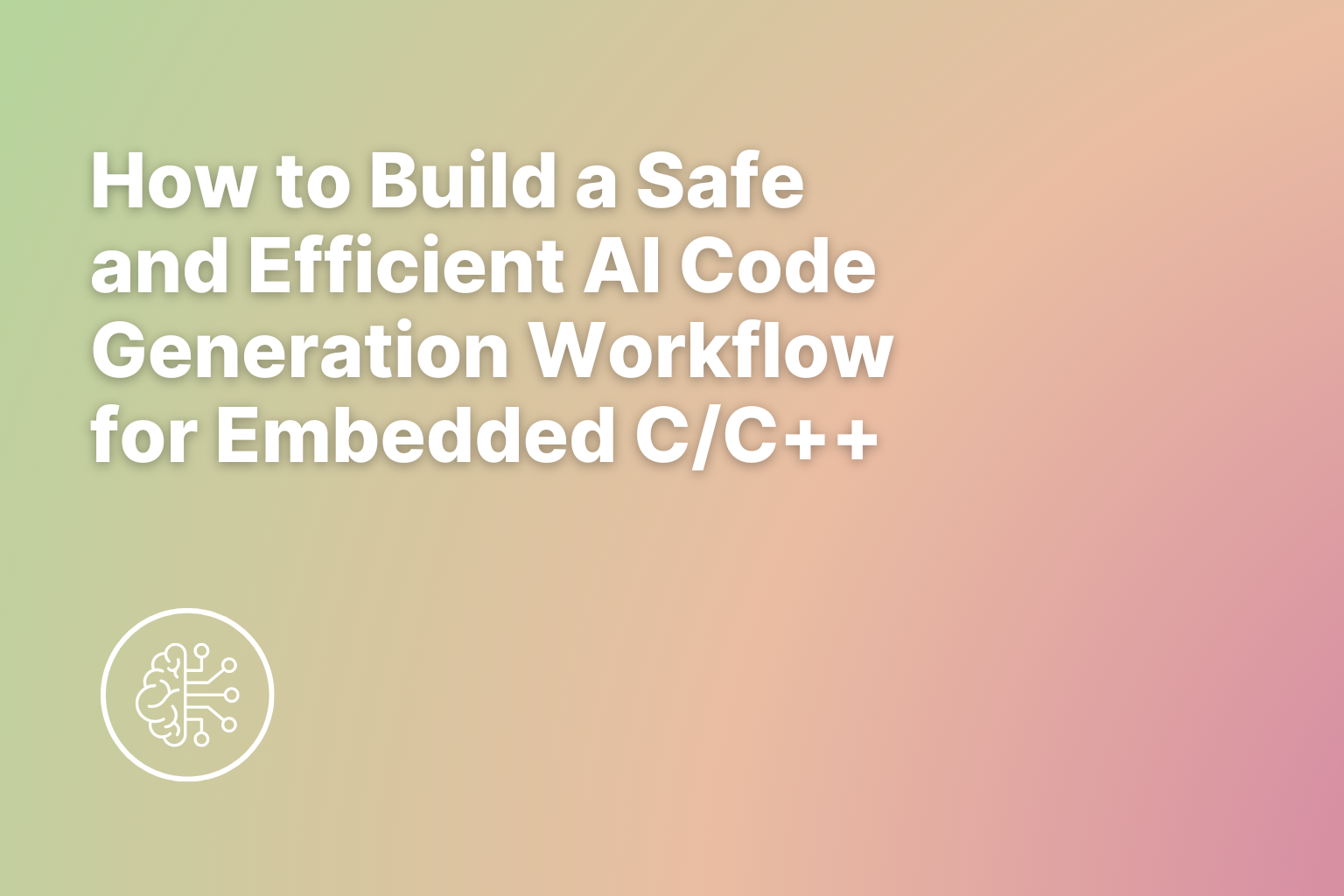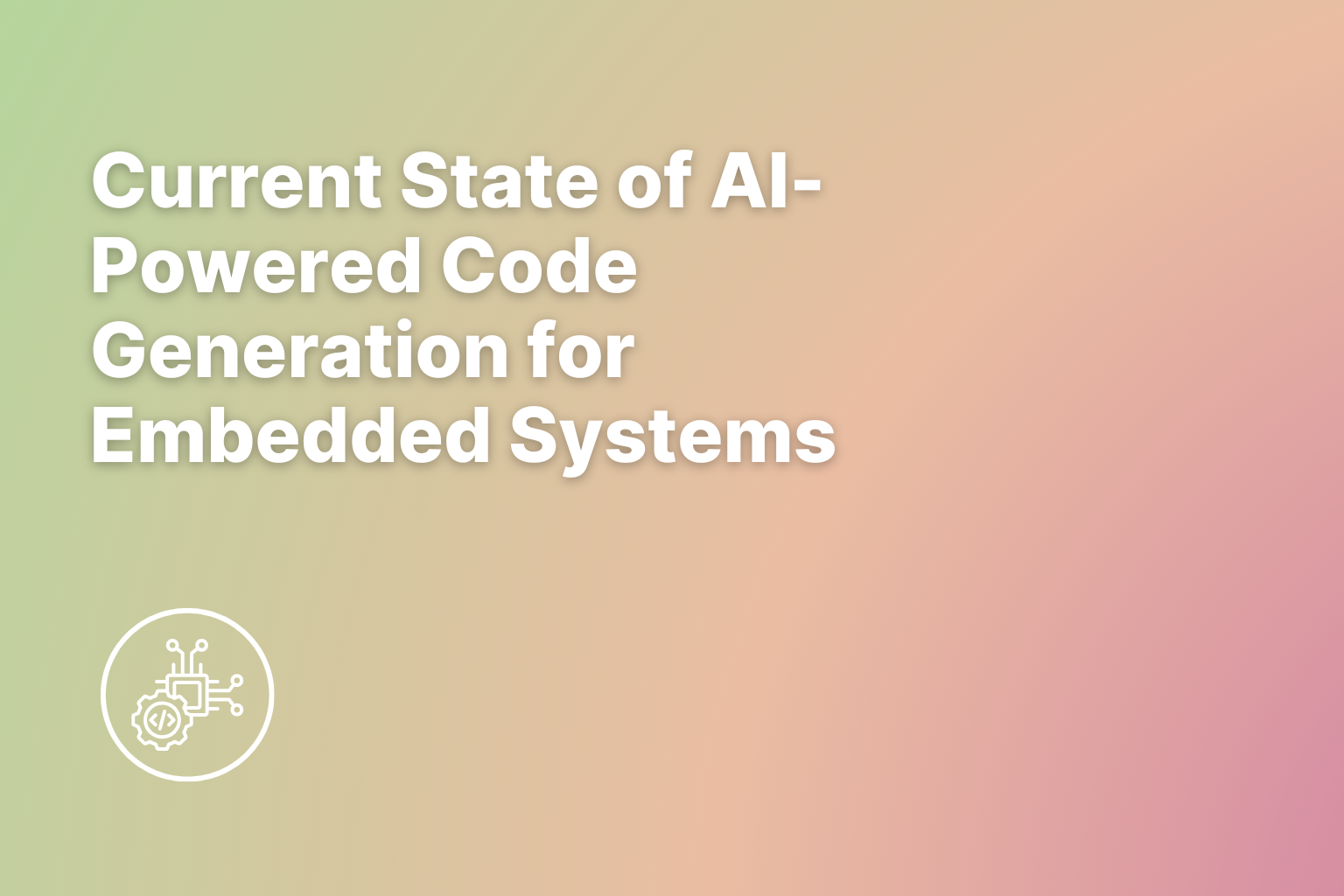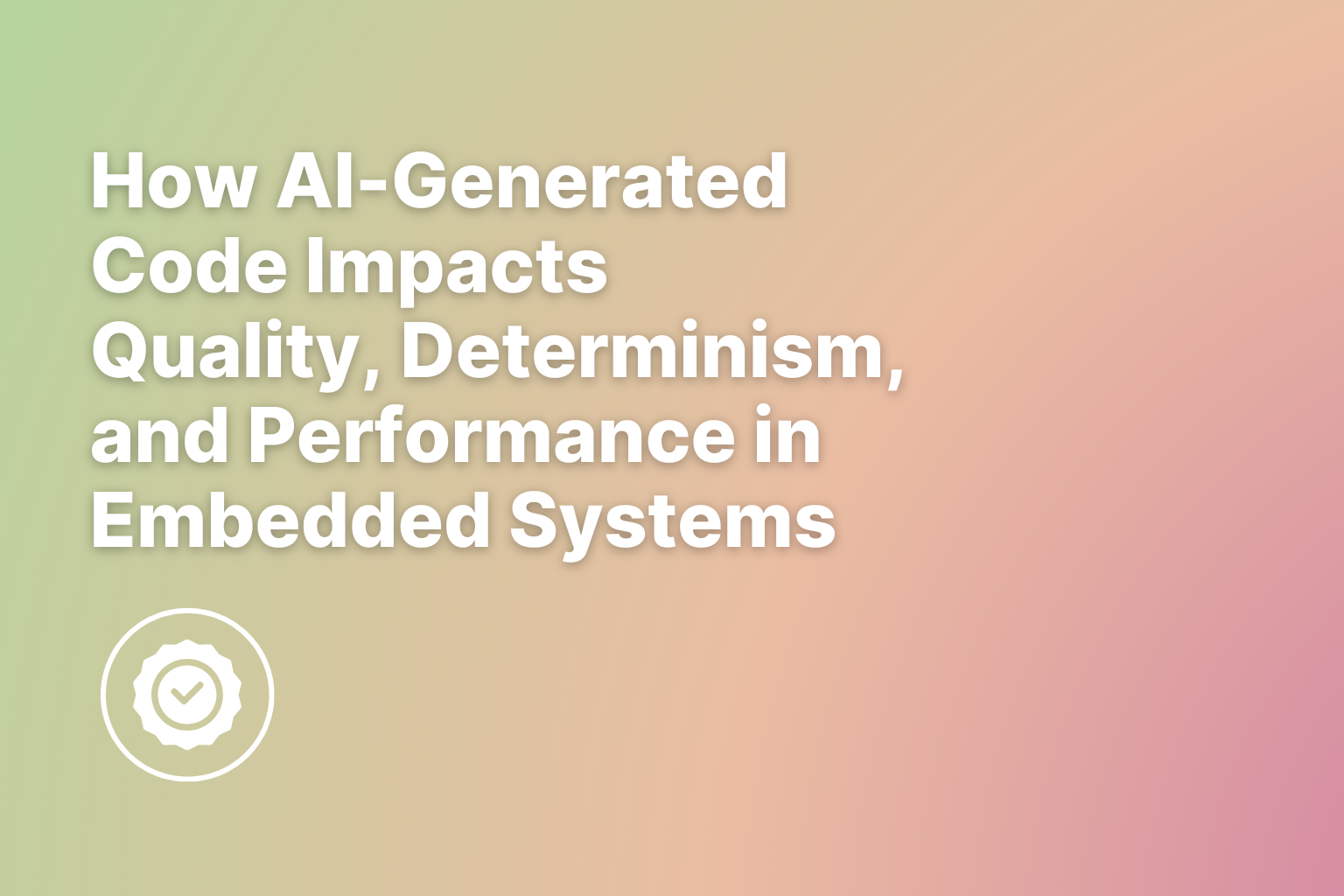Introduction
Generative AI has entered nearly every corner of software development from writing front-end web apps to automating test generation. Embedded systems, long considered a domain for low-level expertise and hardware-specific craftsmanship, are now facing their own wave of “AI coding assistants.”
Developers can now ask a chatbot to “write a C function to blink an LED every 100 ms” and get code that compiles in seconds. This trend, dubbed “vibe coding”, signals a fundamental shift in how firmware might be developed in the coming years.
But in the embedded world, compiling is not the same as performing. The gap between “code that runs” and “code that runs right” remains wide especially when real-time deadlines, power budgets, and memory constraints are involved.
What “Vibe Coding” Really Means for Embedded Engineers
From natural-language prompts to “it just works”
“Vibe coding” refers to using natural-language prompts, or high-level instructions, to generate working code without writing every line manually. Tools like ChatGPT, GitHub Copilot, and other LLM-based systems allow developers to describe what they want, and receive syntactically correct code in response.
For example, an engineer might type: “Write a C program to configure a GPIO pin as output and toggle it every 500ms on an STM32 board.”
The AI will produce code that looks convincing and, in many cases, it even compiles successfully.
Useful for trivial tasks, unreliable for complex systems
For simple routines such as loops, peripheral initialization, or LED toggling, AI-generated code often “just works.”
As highlighted by Electronic Design in its article “Don’t Do It: Vibe-Code Your Embedded System”, these models can quickly prototype boilerplate firmware but lack awareness of the target microcontroller’s memory map, timing constraints, or interrupt behavior (ElectronicDesign, 2024).
Once complexity rises, such as DMA setup, concurrency management, or ISR optimization, LLM-generated code tends to miss subtle hardware-specific details.
AI may generate code that compiles but performs poorly, consuming excess energy or violating timing deadlines because the model doesn’t “see” the hardware context.
The fallacy: syntax over semantics
Large language models understand syntax, not semantics. They “see” patterns in text, not signals in a microcontroller. The result? Firmware that looks correct but ignores what the chip feels, its cache boundaries, instruction pipeline, and power domain behavior.
The Rise of AI-Assisted Code Generation in Embedded Systems
A new coding paradigm
The adoption of AI coding assistants is accelerating across all fields of software engineering. Tools such as GitHub Copilot, Tabnine, and Amazon CodeWhisperer leverage LLMs to predict and generate code snippets, API calls, or full functions from context.
These assistants claim productivity boosts across the board, freeing developers from boilerplate and routine tasks.
Faster prototyping and easier onboarding
In the embedded space, this translates into:
- Quicker setup of peripheral drivers
- Auto-generation of getters/setters and interrupt handlers
- Faster onboarding for new engineers learning unfamiliar microcontrollers
Over 60% of developers say AI tools help them understand or explore unfamiliar codebases, especially in C/C++.
Engineers report that these assistants reduce cognitive load and accelerate early prototyping phases.
Real-world examples
As Altium’s Ari Mahpour demonstrated, it’s now possible to prompt an AI model to generate embedded firmware and deploy it directly on real hardware (Altium, 2024). This new workflow opens the door to faster experimentation, but it also introduces unseen reliability risks when code transitions from text to silicon.
Challenges and Pitfalls in Embedded Context
Why embedded software is a different beast
Embedded development operates under strict real-time, resource, and safety constraints.
Every cycle, every byte, and every microamp counts, especially in automotive, aerospace, robotics, or IoT applications.
As Embedded.com article “Should You Use AI to Develop Embedded Systems?” notes: “Sure, you can use AI to generate code. But the real value comes from using it to develop your test lists and unit tests” (Embedded.com, 2024).
In other words, generating code is the easy part. Making it safe, deterministic, and efficient is the hard part.
Common pitfalls of AI-generated embedded code
- Ignoring hardware constraints - Most AI models lack understanding of timing, cache, and memory layout, leading to non-deterministic or energy-hungry code (WedoLow, 2024).
- Hallucinations and unsafe APIs - LLMs can invent functions, misinterpret registers, or misuse APIs, potentially causing reboots or unsafe device states.
- Overtrust and missed edge cases - Relying blindly on AI outputs may cause engineers to skip validation, missing race conditions or concurrency issues that only appear under real-time stress.
- Generic context - AI models are trained on general-purpose code and lack access to your specific MCU, RTOS, or linker configuration. In embedded work, those details determine performance.
Without rigorous review, these issues can compromise product reliability, delay certification, and increase debugging costs.
Ensuring Quality and Reliability: Best Practices for Using AI in Embedded Firmware
Keep humans in the loop
Generative AI is a great starting point, not a finished product.
Teams should treat AI-generated firmware as draft material, subject to full code review, static analysis, and hardware validation.
Key recommendations:
- Use AI for skeleton drivers, test harnesses, and prototypes, not for final production code.
- Always test on actual hardware (or precise simulators) to verify timing (WCET), stack usage, and memory footprint.
- Integrate AI code into your existing CI/CD and static analysis pipeline.
- Measure performance regressions (timing, memory, energy) automatically to detect AI-induced inefficiencies.
Validate like you mean it
Use automated analysis tools to detect:
- Race conditions and interrupt conflicts
- Stack overflows and heap fragmentation
- Energy or timing deviations
And always pair these results with human review, especially for safety-critical tasks such as ISR design, DMA handling, and fault management.
Respect safety standards
While ISO 26262 (automotive) or DO-178C (aerospace) are not yet adapted to AI code generation, their underlying principles still apply: traceability, verification, and control. AI can accelerate writing tests, but humans must still guarantee system-level safety.
The Emerging Gap: From AI Code Generation to Hardware-Aware Optimization
Where AI stops and optimization begins
Generative AI accelerates code creation, but it doesn’t inherently produce code that’s hardware-efficient or real-time safe.
What’s missing is a second layer:
A hardware-aware analysis tool that evaluates the AI-generated C/C++ code against real MCU or SoC constraints checking timing, power, and memory, and suggesting optimization actions such as:
- Loop unrolling or code inlining
- Stack and heap balancing
- Peripheral-specific instruction tuning
- Dead code elimination
A twin-track workflow for the future
The future of embedded firmware development lies in this dual-layer approach:
- AI generation for speed and exploration
- Hardware-aware analysis and optimization for performance and reliability
This hybrid model ensures that your code is not just written fast, but also runs right (Check “AI Coding Tools Are Changing Development — But Can They Optimize Embedded Software?” article on the subject).
Conclusion: Human–AI Collaboration in Embedded Development
AI-assisted coding offers a powerful productivity boost, but without hardware awareness, it risks inefficiency and unreliability.
Embedded systems operate under real constraints that LLMs cannot yet model: real-time deadlines, deterministic behavior, power budgets, and hardware-specific architectures.
The future belongs to human–AI collaboration, not replacement.
By combining AI’s generative speed with tools that analyze, optimize, and validate performance at the hardware level, embedded teams can enjoy both rapid iteration and trusted reliability.
In short: AI-generated code is a great head start, but not a finished product.


.svg)





.svg)